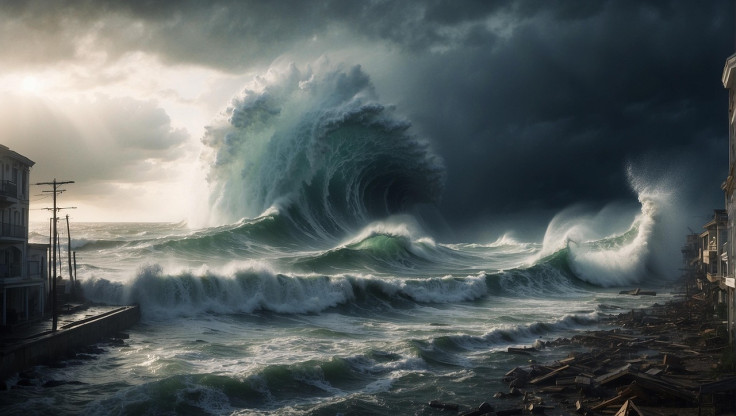Mega Tsunami Warning USA: Scientists Say 1,000 Ft Wave Threat Real, Which Areas Could Be Hit The Hardest?
Scientists Warn US Mega-Tsunami Could Strike Within 50 Years

Scientists are warning that a powerful earthquake in the Cascadia Subduction Zone could trigger a massive tsunami, potentially inundating parts of the US Pacific coastline and causing unprecedented damage.
While the scenario may sound alarming, experts stress that understanding the level of risk – and taking appropriate action now – is essential to saving lives in the future.
Mega Tsunami Warning: How Likely Will It Hit
The Cascadia Subduction Zone, often described as one of North America's most dangerous fault lines, stretches for nearly 600 miles from northern California up through Oregon and Washington and into the coastal waters near Vancouver Island. At this plate boundary, the Juan de Fuca Plate is being forced beneath the much larger North American Plate, creating enormous tension below the sea floor. When that pressure is finally released, the result could be a massive earthquake and subsequent tsunami.
A new study led by geoscientist Tina Dura of Virginia Tech suggests there is roughly a 15 per cent chance that an earthquake of magnitude 8.0 or higher will strike along this fault within the next 50 years. Unlike other seismic zones where pressure is released through frequent smaller earthquakes, the Cascadia Subduction Zone has remained eerily quiet, storing energy over hundreds of years.
The last time the fault ruptured was in 1700, when a powerful quake pushed a wall of water across the Pacific Ocean – resulting in tsunami waves spotted as far away as Japan. According to researchers, a similar event today could be far more devastating due to the region's dense population and heavily developed infrastructure.
Are We Ready?
What concerns experts most is the lack of time available to evacuate in the event of a major tsunami. Many of the coastal towns in Oregon, Washington and northern California are only a few metres above sea level. Following a major seismic event, parts of the shoreline may instantly subside, effectively lowering the land and increasing the reach of floodwaters. In some areas, sea levels could drop by more than six feet before the tsunami makes landfall – a phenomenon that can lure unsuspecting residents towards the shoreline, unaware that a massive wave is approaching.
Computer simulations run for the Virginia Tech research estimate the potential waves in a mega-tsunami could exceed 1,000 feet in height in offshore areas – far higher than most typical tsunamis. While the waves would likely decrease in height as they reach the coast, the sheer volume of water would still be large enough to overwhelm entire cities.
Which Places Could Be Hit
Within minutes, major urban centres such as Seattle and Portland, as well as smaller towns across northern California, could find themselves submerged. Tens of thousands of buildings could be destroyed and major transport routes paralysed. The study estimates that more than 30,000 lives may be at risk and economic losses could reach in excess of $80 billion.
Although Alaska and Hawaii are also mentioned as areas that may experience effects, their distance from the Cascadia Subduction Zone means they are considered less vulnerable during this particular scenario compared with the US mainland. However, both regions are still at risk of other tsunami events due to their own seismic activity.
Researchers warn that current hazard maps do not accurately reflect the scale of this potential disaster. Many areas that are likely to be flooded are not currently identified as high-risk zones, which means thousands of residents may not realise how vulnerable they are. According to the report, early-warning systems and evacuation plans need urgent improvement, particularly for isolated coastal communities where roads could become impassable within minutes of an earthquake.
Lead researcher Dr Dura says the threat should not be underestimated. 'The expansion of the coastal floodplain has not previously been quantified, and our findings show that the impacts to land use and long-term recovery would be far more severe than previously thought,' she explained.
For residents of the Pacific Northwest, this latest warning underlines the need to prepare now. Local authorities in Washington, Oregon and northern California are being encouraged to develop new building standards, improve public awareness campaigns and ensure that escape routes are clearly marked and accessible.
While scientists cannot predict exactly when the next Cascadia mega-quake will strike, the evidence suggests that the risk is very real – and growing. In the words of the report's authors, the best way to face that danger is to 'plan for the worst while hoping it never happens.'
© Copyright IBTimes 2025. All rights reserved.





















